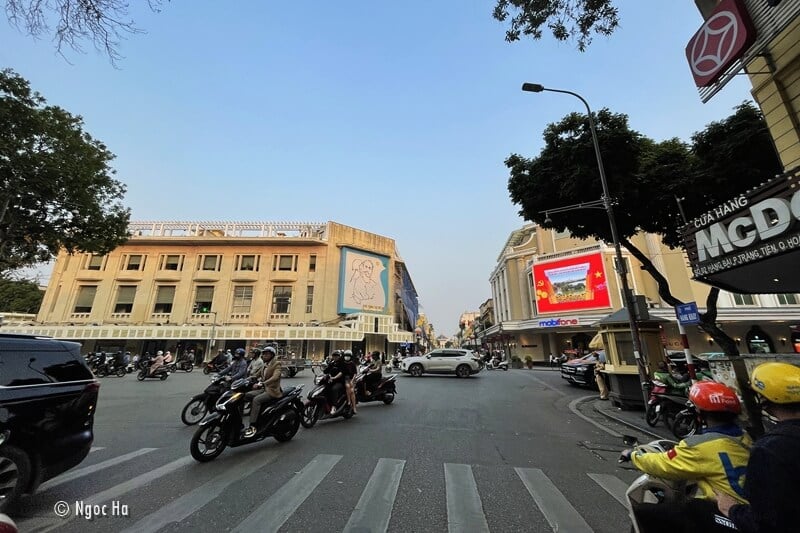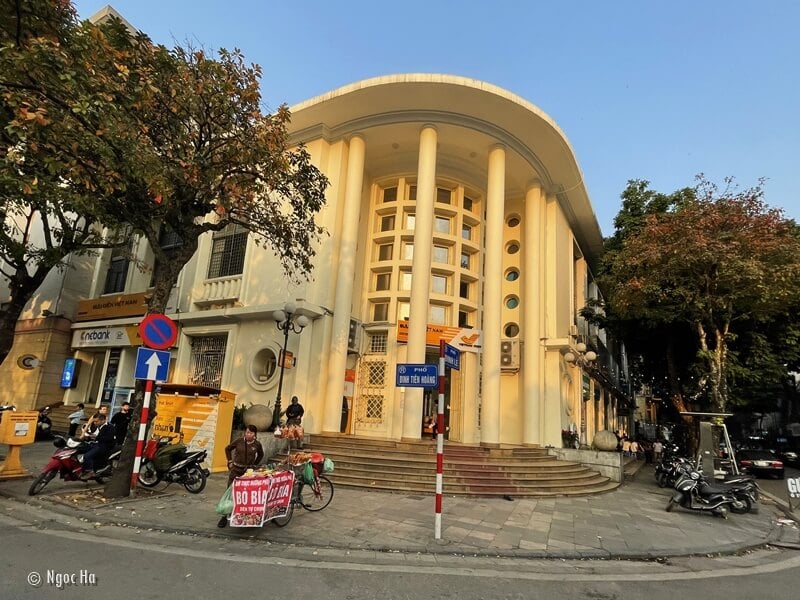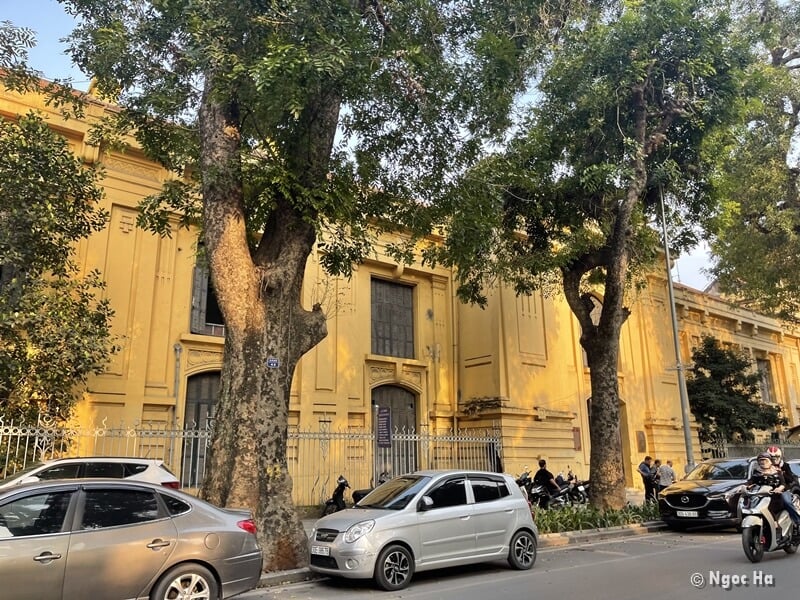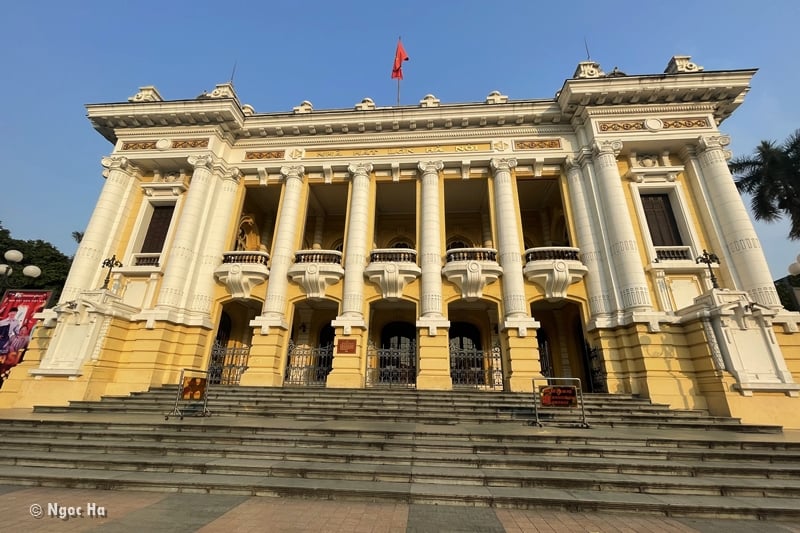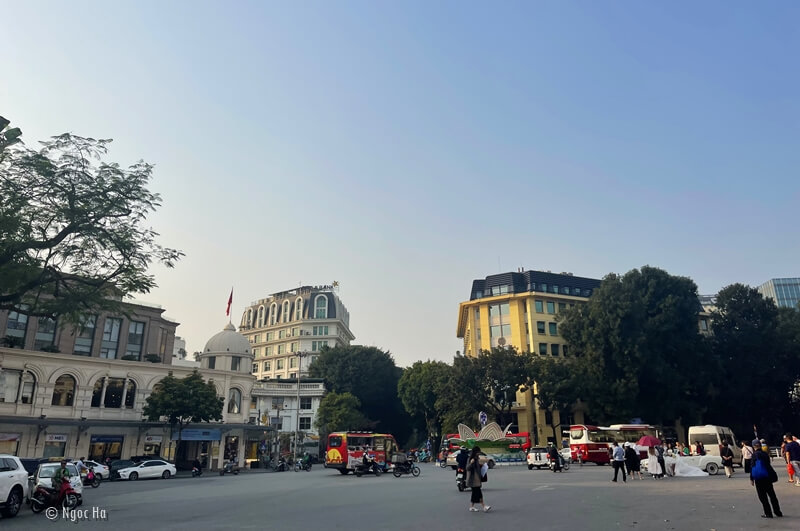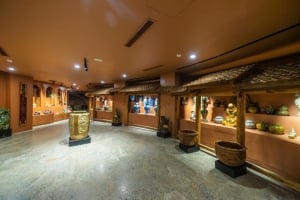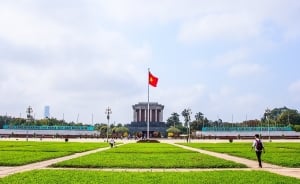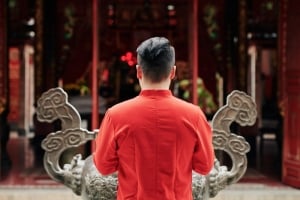The French Quarter in Hanoi was mainly formed and developed during the French colonial period, from the early 20th century until the 1945s.
This area used to be for Hanoi’s Vietnamese and French civil servants. The basic structure of the Quarter is mainly for living with separate villas and buildings serving the government apparatus, such as courts, offices, and commercial shops.
Hanoi French Quarter has typical attractions and is a valuable heritage of the Capital’s culture.
Location and map of Hanoi French Quarter
This is the location of the Hanoi French Quarter on the map nowadays.
History of the development of the Hanoi French Quarter
When the French colonists arrived in Hanoi in the late nineteenth century, the city landscape was quite different from what it is today.
In the memoirs of European merchants, Hanoi Old Quarter is described as narrow streets with no sidewalks and small houses. Hoan Kiem Lake is surrounded by tiny huts, so it is hard to reach the edge of its water.
Since 1884, the colonial government has constructed and renovated the city with the ambition of turning Hanoi into a new, modern city that displays the power and wealth of France.
In 1887, in addition to removing small huts and making roads along Ho Guom Lake, the French paved Trang Tien Street with bricks on both sides. This was the first modern road in Hanoi, which was a prerequisite for the development of a new neighborhood located south of Hoan Kiem Lake.
The colonial government built a French Quarter in the south of Hoan Kiem Lake following the chess board-shaped streets (square towns), combined with crossing roads and squares, which were the typical architecture of European cities in the 19th century.
After being cleared of cottages and garbage, Hoan Kiem Lake automatically became the center of the city. This Quarter softly transitioned between the square form of the southern French streets and the non-standard Vietnamese streets in the north of the lake.
The unique architecture of the French Quarter in Hanoi
In terms of structure, the French Quarter in Hanoi is based on a grid of lines. This structure is quite complete, so it is difficult to be broken. The main roads in the east-west directions have nice pavements larger than the streets in the north-south axes.
Thus, the east-west roads are lined with vital buildings that are urban highlights, such as the Hanoi Opera House, Hang Co Station, the University of Pharmacy, and Ngan State Goods.
The North-South axes are valuable for connecting large spaces such as Hoan Kiem Lake or Thien Quang Lake, as well as the future development area of Hanoi.
In the French Quarter, most buildings designed by French architects were strongly influenced by a colonial architectural style. Also, many villas, semi-detached houses, and office buildings were designed by Vietnamese designers or in cooperation with Vietnamese and French architects in the design and construction process. The details of Vietnamese culture, architecture, and the local lifestyle have also been paid attention to in these heritage sites.
Therefore, the French architecture style has been tropicalized for Vietnam and Hanoi. This is the value of an urban community that is relatively homogeneous in terms of architectural style, height, building density, lifestyle, and income of residents.
The architecture of Hanoi’s French Old Quarter has contributed to the life and development of Vietnam’s Capital. It pointed to the remarkable growth of urbanization in Thang Long of Hanoi, the integration of local culture with Western culture through the reception of construction design, and the development of architectural art based on the experience of urban architecture in France, applied in the Hanoi area.
Typical buildings in the French quarter of Hanoi
From the end of the nineteenth century, the French began to build public works and villas.
From 1920 to 1954, there were more works built on the north of Hoan Kiem Lake:
- Cua Bac Church (built in 1925), Finance House and Register (built in 1925-1930), which is now the headquarters of the Ministry of Foreign Affairs,
- Club French sport (built in 1930) and then became Ba Dinh Club, now located in the Thang Long Imperial World Heritage site, and no trace exists on the ground,
- The many villas, which are used as offices of the government,
- The Marine Club (built in 1939) is now the headquarters of the General Department of Physical Training and Sports, etc.
The eastern area of Hoan Kiem Lake has many valuable architectural works, such as:
- the City Hall (built in 10 years, 1897-1906), now the City People’s Committee,
- Chamber of Commerce and Agriculture ( built from 1897 to 1907), which is now the Bo Ho International Post Office,
- the houses on Paul Bert Street, now Trang Tien Street,
- the Opera House (built from 1901 to 1911),
- the Supreme Court (built in 1912),
- the Palace of Governer (North Governer’s Palace, built in 1918) is now the Government Guest House.
There are also public works such as:
- Hang Co station, built in 1902, is now Hanoi Railway Station,
- Dong Duong and Van Nam Train Company, now the headquarters of the Vietnam General Union,
- K-radium Hospital.
The western area of Hoan Kiem Lake has:
- the Cathedral (built from 1883 to 1891),
- the building of the Ha Noi Moi newspaper office (44 Le Thai To),
- the headquarters of the Hoan Kiem District Police Department, and
- the neighborhood of the public in the area of Nha Chung and Church Streets.
In the south of Hoan Kiem Lake, there are nearly 100 large villas on Tran Hung Dao, Phan Chu Trinh, Ly Thuong Kiet, Hai Ba Trung, and Ngo Quyen Streets, which used to be the residence of high-ranking French and Vietnamese officials.
Present status of French Quarter in Hanoi
When the French stopped their administrative and military presence in Hanoi and Vietnam, the Vietnamese Government managed the French Quarter.
The former office of the colonial Government is now used as the workplace of the new Government. Some villas have been used as offices. Some of them are used as accommodation.
Over time, the population of the villas used for housing increases. The old mansions no longer meet the living needs of their users.
They have to find different ways to improve their living conditions. The simplest method is to build new parts of the building on the remaining space of the villa’s campus or expand the attic or loft.
Also, new interior equipment was added: air conditioning, a modern bathtub, and a water heater. The villas have been deformed and distorted and have lost their original value.
Besides, due to business demand, people have destroyed a few parts of the villas, especially the areas adjacent to the streets, to renovate them into stores. Many surrounding walls were demolished and the gardens of the villas were turned into shops, eateries, and cafes.
Besides, many villas were destroyed entirely to build modern buildings. The number of villas for a living has been decreasing because of the process of demolition and renovation.
However, many people in Hanoi try to repair and restore some villas and old buildings. This remodeling is primarily for business, such as opening restaurants, hotels, and offices. Therefore, when tourists come to the French Quarter, they still see the old buildings on the streets of the Ba Dinh and Hoan Kiem districts.
>> You may want to check the popular 3-star hotels in Hanoi.
What to do in the Hanoi French Old Quarter
The French Quarter is a typical area in Hanoi, Vietnam. It is a cultural heritage, especially in terms of architecture and urban planning. This Quarter is a famous tourist destination in Hanoi and attracts thousands of visitors every day.
- It is excellent to explore and take pictures of the architectural French buildings.
- Another activity is to sit down at one of the famous egg coffee shops to taste a cup, a unique drink in Hanoi, and watch the local life going up and down.
- Also, you stop at excellent restaurants to enjoy your dinner. You can check Au Delice Restaurant (Opening hours: 09:00 – 22:00, at 2B Ngo Thi Nham, Hoan Kiem, Hanoi), La Terrasse Du Metropole (Opening hours: 11:00 – 22:00, at 15 Ngo Quyen Street, Hoan Kiem District, Hanoi), and Sen Restaurant (Opening hours: 18:00 – 22:00, at 60 Ly Thai To Street, Hoan Kiem District, Hanoi).
- Shopping in the French Quarter is also a great time because it has many modern shops with high-quality products from many famous brands in Vietnam and worldwide. The top one of this place is Trang Tien Plaza at 24 Hai Ba Trung Street, Hoan Kiem District, Hanoi.
- At night, some rich bars attract many guests who like active life at night in Hanoi to spend their time here. The guests include the locals and tourists.
>>> You may want to see more a big shopping site: Lotte Center Hanoi.

